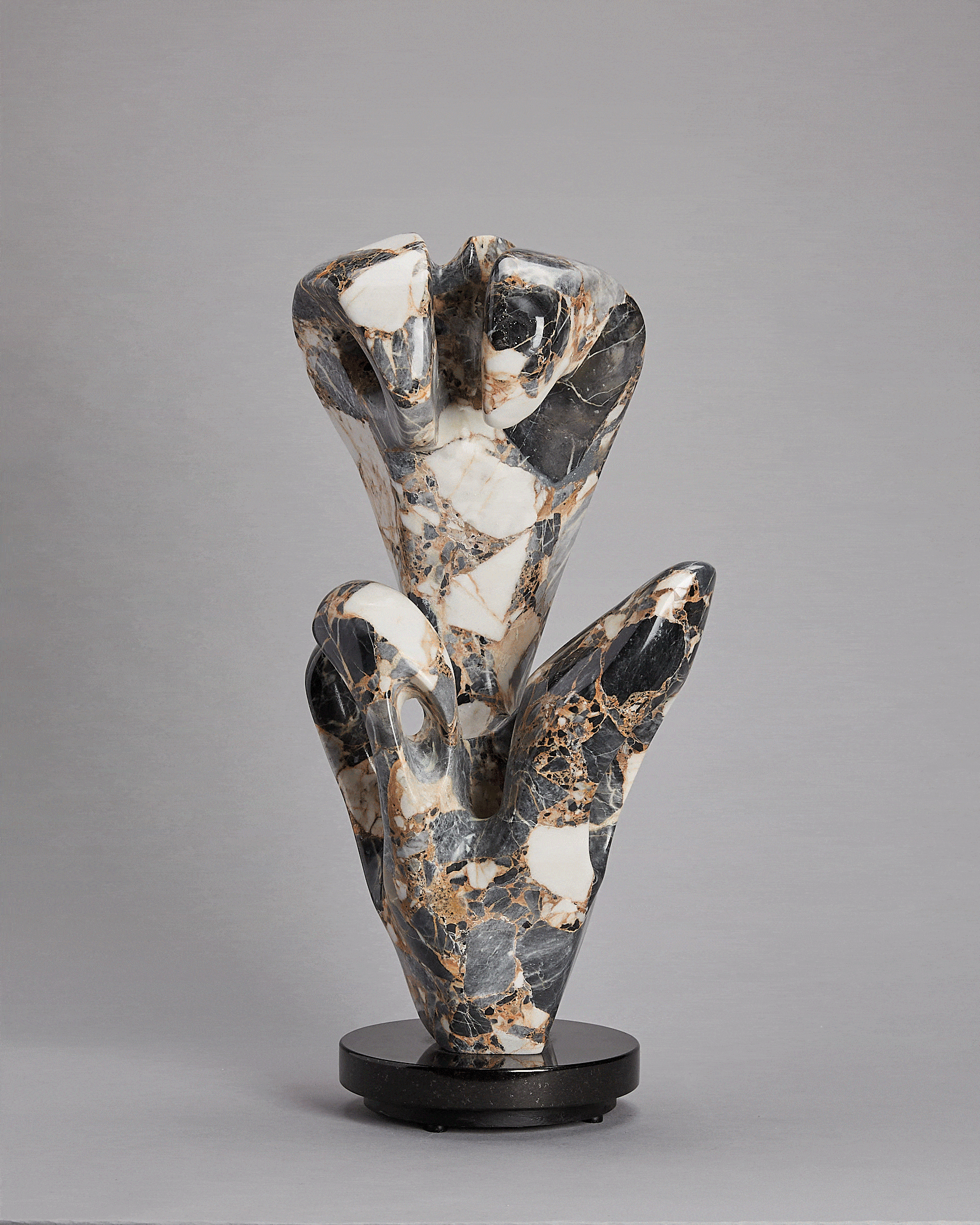Recent Sculptures

Serenity
I created Serenity from Pink Alabaster. The ancient Egyptians called alabaster the stone of the “Sun Gods“. They believed if they were buried with it, the stone would draw their souls back toward the light. Alabaster is a soft stone that has been used throughout history and can be found in many places in the world. They are usually lightly colored, translucent, and soft stones. They have been used throughout history primarily for carving decorative artifacts as well as sculptures.
You can see more images of Serenity here.
Asymmetrical
Asymmetrical is carved from Roman Breccia, which can be a colorful rock. The colors of the matrix or cement, along with the color of the rock fragments, determine its color. The word breccia originated from the Italian language which means loose gravel. The basic sequence is as follows: sediment is laid down in the sea, and is gradually transformed into sedimentary rock. After a long period of time something violent happens to the rock, breaking it up into many jagged pieces. Later the pieces are cemented together by another deposition, forming a new sedimentary rock. On examination, the rock is seen to include fragments of the original rock.
More images of Asymmetrical can be seen here.


Green Hornet
I created Green Hornet from green marble. This marble is fine-grained, with a variable green color and attractive veining. It is considered one of the hardest marbles in the world. Green marble has been used extensively in buildings and monuments worldwide. In fact, the main desk in the General Assembly building of the United Nations features the presiding official’s rostrum constructed from green marble, with a matching wall behind it.
Click here for more images of Green Hornet.